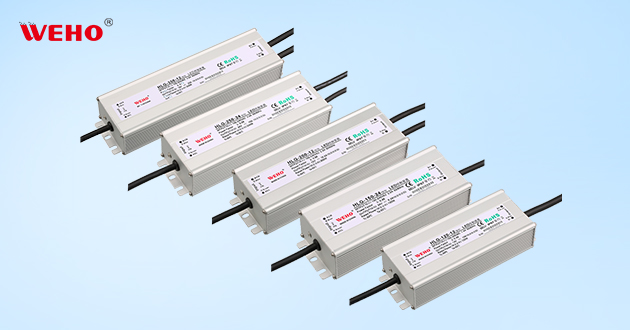LED lighting has revolutionized how we illuminate our world, offering efficiency, longevity, and incredible design flexibility. But behind every high-performing LED fixture lies a critical, often unsung hero: the LED driver. This crucial component converts AC mains or DC source power into the precise current and voltage required by the LEDs.
The quality of the LED driver directly impacts everything – light output stability, efficiency, lifespan, dimming performance, and overall safety. That’s why rigorous testing isn’t just a step in the manufacturing process; it’s fundamental to ensuring a successful lighting installation.
Whether you’re an OEM integrating drivers into fixtures, a specifier choosing components for a large project, or an engineer designing lighting solutions, understanding how to test an LED driver is vital. This guide will walk you through the essential testing procedures, highlighting what to look for and why choosing a meticulously engineered driver, like those from WEHO, can make all the difference.

Why Thoroughly Test LED Drivers?
Skipping or skimping on driver testing can lead to:
Performance Issues: Flickering lights, inconsistent brightness, poor colour rendering, or incompatibility with dimming systems.
Reduced Lifespan: Premature failure of the driver or the LEDs themselves due to electrical stress or overheating.
Safety Hazards: Risk of electrical shock, fire due to inadequate protection mechanisms, or component failure.
Non-Compliance: Failure to meet industry standards and regulations CE Rohs ISO9001 FCC, hindering market access.
Increased Costs: Warranty claims, replacements, reputational damage, and potential redesigns add up quickly.
Testing verifies that the driver meets its specifications under various operating conditions, ensuring it performs reliably and safely throughout its intended lifespan.
Essential Equipment for LED Driver Testing
To perform comprehensive testing, you’ll need a well-equipped test bench. Key instruments include:
AC/DC Power Source: Programmable and capable of providing the specified input voltage and frequency range, including simulating line variations (sags, surges).
Digital Multimeters (DMMs): For accurate measurement of input/output voltage, current, and sometimes resistance. High precision is key.
Electronic Load (E-Load): Crucial for simulating the LED load accurately. It should support Constant Current (CC) and Constant Voltage (CV) modes, matching the driver’s output type. Using actual LED modules is also possible but less flexible for stress testing.
Oscilloscope: Essential for visualizing and measuring output ripple and noise, switching waveforms, and timing characteristics during startup or dimming.
Power Analyzer: Measures input power, voltage, current, power factor (PF), total harmonic distortion (THD), and efficiency accurately.
Thermal Camera or Thermocouples: To monitor the temperature of the driver casing and critical internal components under load.
Dimmer/Control System Simulator: If testing dimmable drivers, you need the appropriate dimmer PWM controller or a simulator to test dimming range, curve, and stability.
Environmental Chamber : Allows testing under controlled temperature and humidity extremes.
Safety Tester (Hipot Tester): For testing dielectric strength (isolation) and insulation resistance.
Key LED Driver Testing Procedures
Here’s a breakdown of the critical tests performed on LED drivers:
1.Input Characteristics Tests
These tests verify how the driver interacts with the input power source.
Input Voltage & Frequency Range: The driver must operate correctly across its specified input range 100-277VAC, 50/60Hz
. Test at nominal, minimum, and maximum voltage/frequency levels. High-quality drivers, like those from WEHO WEHO, often feature wide input ranges, offering greater application flexibility and resilience to line fluctuations.
Inrush Current: Measure the peak current drawn when the driver is first powered on. Excessive inrush current can trip breakers or damage components. Well-designed drivers incorporate limiting circuits.
Power Factor (PF) & Total Harmonic Distortion (THD): PF measures how effectively the driver uses input power (closer to 1 is better). THD measures the harmonic currents injected back onto the power line (lower is better). Regulations often mandate specific PF and THD limits >0.9 PF, <20%. WEHO drivers are engineered with active PFC circuits to achieve excellent PF and low THD, ensuring compliance and energy efficiency.
Standby Power (No-Load Power Consumption): Measure the power consumed when the driver is connected to the input but the output is not loaded or turned off (if applicable). Important for energy efficiency regulations.
2.Output Characteristics Tests
These tests focus on the quality and stability of the power delivered to the LEDs.
Output Voltage & Current Regulation:
Constant Current (CC) Drivers: Verify the output current remains stable across the specified output voltage range (compliance voltage) under varying loads and input conditions. This is crucial for consistent LED brightness and longevity.
Constant Voltage (CV) Drivers: Verify the output voltage remains stable across the specified load current range.
Line Regulation: How much does the output change when the input voltage varies?
Load Regulation: How much does the output change when the load varies?
WEHO Led drivers boast tight line and load regulation, ensuring stable light output regardless of power fluctuations or variations in the LED load.
Output Ripple & Noise: Using an oscilloscope, measure the unwanted AC components superimposed on the DC output. Excessive ripple can cause visible flicker and stress LEDs. Look for values specified in mV peak-to-peak or as a percentage of the output. Our drivers are designed with Ultra low ripple output stages for visually comfortable, flicker-free lighting.
Efficiency: Calculated as (Output Power / Input Power) x 100%. Measured using a power analyzer across different load conditions 100% load
. Higher efficiency means less energy wasted as heat, leading to lower operating costs and improved reliability. WEHO Led Driver prioritizes high efficiency in our designs, often exceeding industry standards.
Turn-On Delay & Rise Time: Measure the time it takes for the output to reach its stable operating level after power-on.
3.Protection Feature Tests
Robust protection circuits are essential for safety and driver longevity. Test these deliberately:
Short Circuit Protection (SCP): Safely short the output terminals. The driver should shut down or enter a hiccup mode (repeatedly trying to restart) without damage, recovering automatically when the short is removed.
Over Voltage Protection (OVP): If applicable (mainly for CV drivers or CC drivers with specific OVP limits), simulate an over-voltage condition on the output. The driver should shut down or limit the voltage.
Over Current Protection (OCP): For CV drivers, increase the load current beyond the rated limit. The driver should limit the current or shut down. For CC drivers, this is inherent, but check behaviour outside the compliance voltage range.
Over Temperature Protection (OTP): Operate the driver under maximum load in an elevated ambient temperature (or restrict airflow) until OTP triggers. The driver should reduce output or shut down safely and recover when cooled. [Your Brand Name] integrates comprehensive protection features, rigorously tested to ensure reliable operation even under fault conditions.
4.Dimming Performance Tests (If Applicable)
For dimmable drivers, performance across the dimming range is critical.
Dimming Compatibility: Test with the specified dimmer types (TRIAC, 0-10V, DALI, PWM, etc.).
Dimming Range: Verify the driver dims down to the specified minimum level 1%
Dimming Curve: Check if the light output corresponds smoothly and predictably to the control signal (linear, logarithmic).
Smoothness & Flicker: Observe the light output during dimming transitions and at low levels. Ensure there’s no noticeable stepping, shimmering, or flicker (use a flicker meter for objective measurement if needed). WEHO WEHO Led Driver offers a range of dimmable drivers known for their wide compatibility and smooth, flicker-free dimming performance down to low levels.
Popcorning: Ensure LEDs turn on/off cleanly without flashing when dimmed to minimum or switched via the dimmer.
5.Thermal Performance Tests
Heat is a major enemy of electronic components.
Temperature Rise: Operate the driver at maximum load and nominal input voltage in its intended operating environment (or a specified ambient temperature). Measure the temperature of the case (Tc point) and critical internal components (capacitors, switching elements) using thermocouples or a thermal camera. Ensure temperatures remain within specified limits for safety and component longevity.
Thermal Management: WEHO WEHO Led Driver places significant emphasis on thermal design, utilizing high-quality components with appropriate temperature ratings and efficient heat dissipation techniques, validated through extensive thermal testing.
6.Reliability and Stress Testing
These tests accelerate the aging process to predict long-term reliability.
Burn-In Test: Operating drivers under load (often elevated temperature and voltage) for an extended period (hours or days) to weed out early failures.
Temperature Cycling: Subjecting the driver to repeated cycles between high and low-temperature extremes to check for solder joint fatigue or component stress failures.
Highly Accelerated Life Testing (HALT): Applying combined stresses (temperature, vibration, voltage) beyond normal operating limits to quickly identify design weaknesses. While end-users typically don’t perform HALT, manufacturers like WEHO utilize such advanced testing during development to build inherent reliability into our products.
Interpreting Results: The WEHO Advantage
Testing reveals the true quality of an LED driver. While basic drivers might pass some tests under ideal conditions, they often fall short when subjected to real-world variations or stress.
Consistent Performance: A driver from WEHO is expected to meet or exceed its datasheet specifications across the entire operating range, ensuring predictable and reliable lighting.
Robust Protections: Our drivers’ protection circuits are designed not just to pass a single test but to function reliably over the product’s lifetime, safeguarding your investment and ensuring safety.
Designed for Longevity: Through careful component selection, thermal management, and rigorous internal testing protocols (often exceeding standard requirements), WEHO drivers are built to last. You’re not just buying a component; you’re investing in peace of mind.
Simplified Integration: When you choose a driver that has already undergone extensive validation, your own integration and testing process becomes smoother and faster, saving valuable time and resources.

Conclusion: Don’t Compromise on the Core
The LED driver is the heart of any modern lighting system. Thorough testing is non-negotiable for anyone serious about delivering high-quality, reliable, and safe lighting solutions. While performing these tests yourself provides valuable insight, partnering with a manufacturer committed to rigorous quality control and transparent specifications is paramount.
At WEHO, we understand the critical role LED drivers play. That’s why every driver we design and manufacture undergoes comprehensive testing, ensuring it delivers on its promises of performance, efficiency, and longevity. By choosing WEHO, you’re choosing a driver tested and proven to perform, allowing you to focus on creating exceptional lighting experiences.
Ready to ensure the reliability of your next lighting project?
Explore our range of rigorously tested LED drivers:WEHO Led Driver
Have specific requirements? Contact our technical team: Contact WEHO
Learn more about our quality commitment:Company Information








